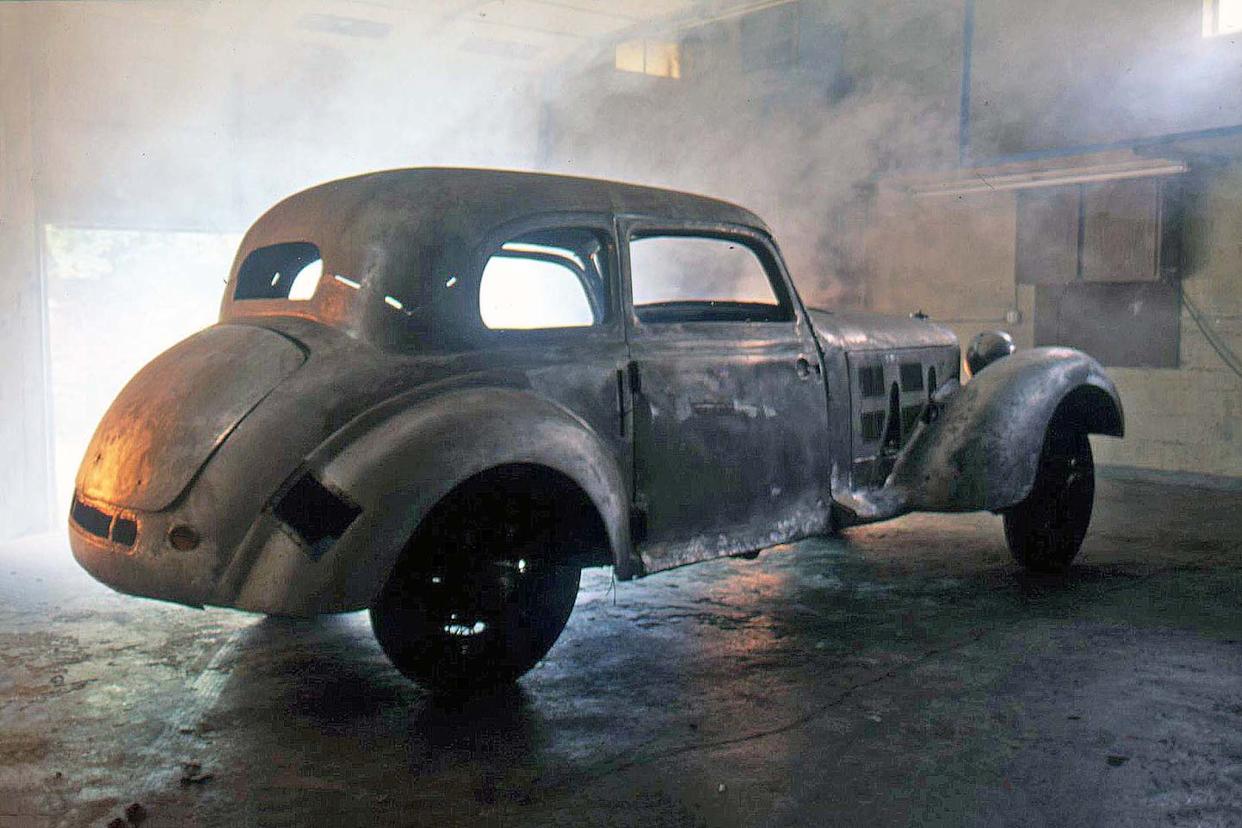
From the October 1996 issue of Car and Driver.
Some names and places have been changed to protect the principals in this story —Ed.
On May 27, 1942, the second-most-despised man in all of Nazi-occupied Czechoslovakia, Gen. Reinhard Heydrich, was being chauffeured in an open Mercedes to his quarters in Prague's Hradcany Castle. At a bend in the road, two men waited for him. One was Josef Gabcik, who concealed a submachine gun under a raincoat, and the other was Jan Kubis, whose briefcase held two grenades.
The Mercedes 320 Cabriolet B was an hour late when it finally appeared. Gabcik stepped off the curb and into the path of the oncoming car. When the driver instinctively hit the brakes, Heydrich leaped to his feet and shouted at him to go on. Heydrich—he was called "the Hangman of Europe"—had vast experience in terror and killing, and he knew what was about to happen.
Although the two assassins and four others had been trained for months, what happened next seemed unimaginable: With Heydrich in his sights, Gabcik's gun jammed. The Nazi general, frantic and yelling, had by this time freed his sidearm from its holster and was firing wildly at Gabcik, who dropped the gun and ran. Kubis, who was close by, stepped up and lofted a grenade at the car. Heydrich was hit and collapsed on the street. It is said he was in the worst sort of pain for eight days, and then he died.
In retaliation, the Nazis slaughtered the male inhabitants of Lidice, a village thought to have sheltered the assassins. Hitler then ordered Daimler-Benz to produce some closed, bulletproof cars—chiefly, 20 supercharged 540K models, called Aktion P cars (the P for panzer, or armored vehicle). They were to safeguard his inner circle—Nazis like Himmler, Goebbels, Speer, Kaltenbrunner.
Daimler complied by using two new chassis and rebodying 18 540Ks, some confiscated from existing owners. New aluminum bodies were built for all 20 cars, featuring 35-mm-thick bulletproof windshields, 30-mm side glass, and 2.3-mm steel armor plating inside the sides, the floor, and the roof. At war's end, their infamous occupants had either committed suicide or wound up at the end of a rope in Nuremberg. The cars wound up being treated as so much Nazi trash. Misused and discarded, they vanished into the fog of history.
Now, five decades later, at a time when rare old cars are worth fortunes, only one Aktion P is known to have survived, and it resides, fittingly, in a museum in Czechoslovakia.
You can see it in the holocaust-themed film Schindler's List. It is not a spectacular car, like the other 540K convertibles, but its rarity makes it worth millions. A curator at the Mercedes museum, perhaps a bit too generously, guessed it might be worth $20 million.
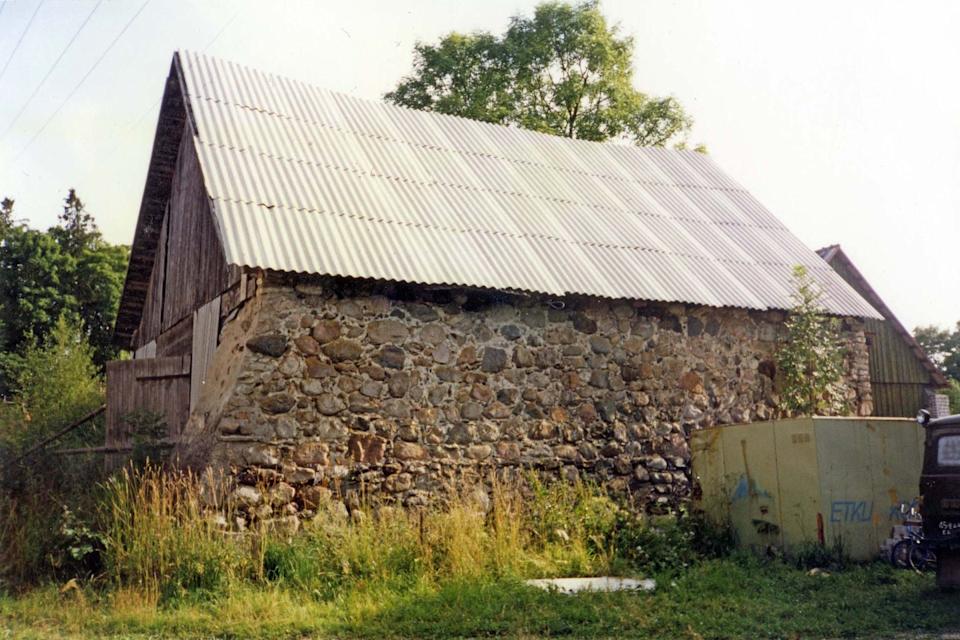
It was no surprise that Peter the Swede would be the one to find the car. Peter looked tough—the leathery face, the wiry physique, a biker ponytail—and was fearless in strange foreign places. Then again, after you've spent nine months at the mercy of some sadistic anti-Western jailers in Libya—most of the time naked, it was said—the world is no longer a scary place.
Peter the Swede had been around, even lived for a while in the U.S. His talent was that people seemed to trust him immediately. Maybe insurance companies didn't—in the mid-1980s, he was picked up by the Libyans in the sea off Tripoli after scuttling a boat for an owner who was after the insurance money—but people did.
In the summer of 1992, he walked into a town in Latvia, a former Soviet-bloc country west of Moscow, struck up conversations with strangers—even though he didn't speak the language—and ended up being invited to spend the night on somebody's sofa.
So, poking around in that Baltic town, asking the right questions in his friendly and cheerful way, Peter the Swede would be pointed to the countryside, and later he would lead three Americans to a stone-walled barn that contained the jackpot car.
Actually, the car was in two houses and four barns.
Meanwhile, back in America that same summer of '92, an aspiring hustler was dangling rare-automobile bait over the phone to Dick Fritz. It was a fool's errand, since Fritz, now in his early fifties, once worked in Ferrari's main American office, was later a major player in the automotive "gray market" (altering foreign cars to meet U.S. regulations via his Amerispec Corporation in Connecticut), and an all-around wheeler-dealer in exotic cars.
The hustler we'll call Barry of Memphis. He had an American partner in Moscow named Bud, he said, who could lead Fritz to "hundreds" of valuable old cars, mostly MercedesBenzes pirated from Germany by the victorious Red Army at the end of World War II.
With the collector-car market in a coma since its collapse in 1990, Fritz was ripe for a hunting expedition. And he knew that the notion of stumbling across a million-dollar car in a field, or in a barn, was not a myth.
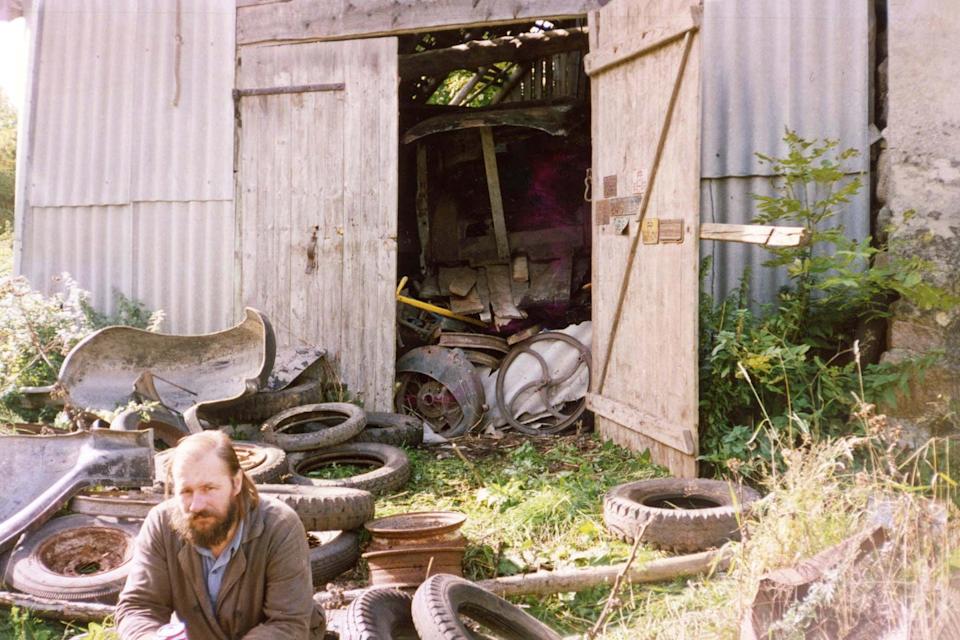
Fritz relayed this story to one of his business contacts, an independently wealthy Yankee gentleman we'll call Brewster, who quickly offered to finance an expedition. A third partner was brought in—Rich Reuter, a third-generation car restorer from Danbury, Connecticut, who could tell at a glance if a rusting old hulk had a future—and a deal was struck.
The new partners flew Barry of Memphis up to Connecticut to see if he was real or fake. Barry brought more bait: snapshots from Moscow of three cars he and his partner had "already bought," a prewar Horch four-door convertible and two prewar Mercedes—a cabriolet and a roadster. Very nice cars, they all agreed.
Barry said he was going to Moscow soon. Fritz said he'd put together a trip with his partner and meet them there. Brewster would pay $10,000 for the trip to Russia and bring along $50,000 in cash. On June 24, 1992, the hunt began.
The cash they carried was a constant source of anxiety. They tried to camouflage their American-ness by dressing in "not-so-nice clothes," as Fritz put it. The tiny rooms in a Lufthansa hotel were more than $200 a night. Moscow had a predatory feel to it—news of murder and the "Russian mafia" were commonplace—and they only went out at night to eat. The food was laughably bad. The best restaurant, though expensive for Russians, was the Moscow McDonald's.
Barry and Bud had promised to meet the Americans at their hotel on the second day, but they never appeared. Fritz, Reuter, and Brewster had made a few other contacts, and thus began a series of fruitless, comic excursions in search of old cars. Fritz videotaped these, though the plot always seemed the same: The camera records a dismal cityscape flying by, then a procession of the interpreter, the driver, and the American files through some junk-filled inner courtyard, coming ultimately upon a crumbling hulk. Always, the original engine has been removed, replaced by what appears to be a Soviet tractor engine. Inside, the floorboards might be covered by peeling kitchen linoleum, or there are gaping holes in the floorboards. Or flowered drapery sewn into the door panels, or maybe the bumpers have been swapped, or the trunklid is gone. Always there is the Russian owner, wearing grimy clothes and looking a bit haggard, claiming relentlessly that everything in the car is "o-rig-uh-nul, all o-rig-uh-nul." Spirits began to sink.
Fritz had a contact from Intourist, and he did buy three motorcycles—a wartime Harley, a Matchless, and an Indian—for $2500, which would pay for the trip. The rest of the time, "we went out and looked at junk, and cars that didn't exist. You know, a Russian would say, 'I know a woman whose brother-in-law's husband has a whatever,' and of course it didn't exist."
Two days later, Barry and Bud finally appeared. And Bud, the man in Moscow, "turns out to be an arrogant sonovabitch," says Fritz. "We say we'd like to see some cars, and Bud says, 'You can't just see cars. If you want to see cars, you gotta make an agreement that you're going to buy them now.' After a while, all we wanted to do was give him a nosebleed. Still, you don't close the door. We wanted to see the three cars in the photographs. And Bud says, 'Uh, no, we already sold those. They're already on the boat to America. You guys are just too late. If you don't move quickly here, you don't get cars.'"
The Americans bit their tongues while Bud told them he had a Mercedes G4 six-wheeled car "a thousand miles from Moscow inside a security fence at a Russian air base, and we're just about at the point where we can get it. But we do have a Mercedes 770W 150 on a truck coming here, and there's a special four-wheel-drive Mercedes made for a German general, an open car."

Fritz continues: "The next day, they take us to see this special Mercedes. They pick us up in this little junker. There are six of us packed into it like sardines. We get to an apartment, and they want just one of us to go up, the rest to wait outside. So I give my money to my guys, and I go up. He begins telling me how this is all secret and 'we don't want anybody to know where we live' and where this and that is, and I say, 'Look, do you want to do something or not? We don't give a shit where you live, we don't care where the cars are, we don't know anything—just show us some cars, and we'll do something.' So we bring everybody up and we talk, and finally Bud says, 'Okay, I'll show you this car.'
"So we drive 20 minutes away to a place where there are all these garage stalls. He opens up a padlock, and here's this Mercedes inside, the special car. Rich and I look at it, and Rich says to me, 'This is screwed.' He was right. It didn't have the right engine, the right gearbox. Somebody had ripped the guts out of it and put in a four-wheel-drive truck suspension. So Bud says he's been studying the archives, uh-huh, and had reason to believe it belonged to General Zup-whatever and we could have it right now for 30 grand. Then he says, 'If you want to buy any of the other cars, you have to buy this one first, or I'm not going to sell you any of the other cars,' and we say, 'Maybe we will, so what are the other cars?' And Bud says, 'We have the 770, but I need the money from this car to buy the 770 that's on the way here. I gotta pay the guy when it gets here.'"
That day was the last time they saw Barry and Bud. Then, just hours before the Americans were to leave for St. Petersburg, another contact named Stash appeared excitedly at their hotel at 10 p.m. "He said he'd found some cars—a Mercedes 540K, a Mercedes roadster, and so forth," says Fritz. "So we run up and get our cameras, and we go to a guy's apartment who's an artist. He takes us to a garage with a dirt floor, and there are the cars—a nice white open car, a 540K, and a Horch. Wow! Rich opens the hood of the Horch, and I see a blue-and-white label under the hood. And I remembered it because I had looked at it under the microscope—in Barry and Bud's photos! These were the cars that were supposedly on the boat to America!" The irony was that the proud owner was only too happy to show them off to visitors, but had no intention of selling them. So Bud had simply photographed the cars and pretended he could deliver them.
They headed for St. Petersburg. Hearing that train compartments were more easily robbed than newspaper racks, the Americans wired themselves—and about 40 grand—inside a compartment for the overnight trip. The trip was a bust, but they made more contacts. Ten days after arriving in Russia, they flew home, carless.
Fritz was not discouraged."Now we had all these guys in Russia working for us, looking for cars. This was just the start of business, and we knew we'd go back in a month or so. The cars are there. And big things were going to happen."
In July, Fritz got a call from a woman who advertises for old Mercedes-Benzes in Hemmings Motor News.
"She said she got a call from this guy in Latvia," says Fritz, "and this guy's got a Mercedes 540K."
Fritz asked her, "What kind of 540K?" "It's bulletproof," the woman replied. With that, "my mind just took off," Fritz recalls. An article was located in Automobile Quarterly on the 540Ks that Hitler had turned into armor-plated Aktion P cars for his inner circle. Pulse rates zoomed when they discovered that only one of those 20 was known to have survived, and it was esteemed enough to be in a Prague museum. So a second surviving car would be rare indeed.
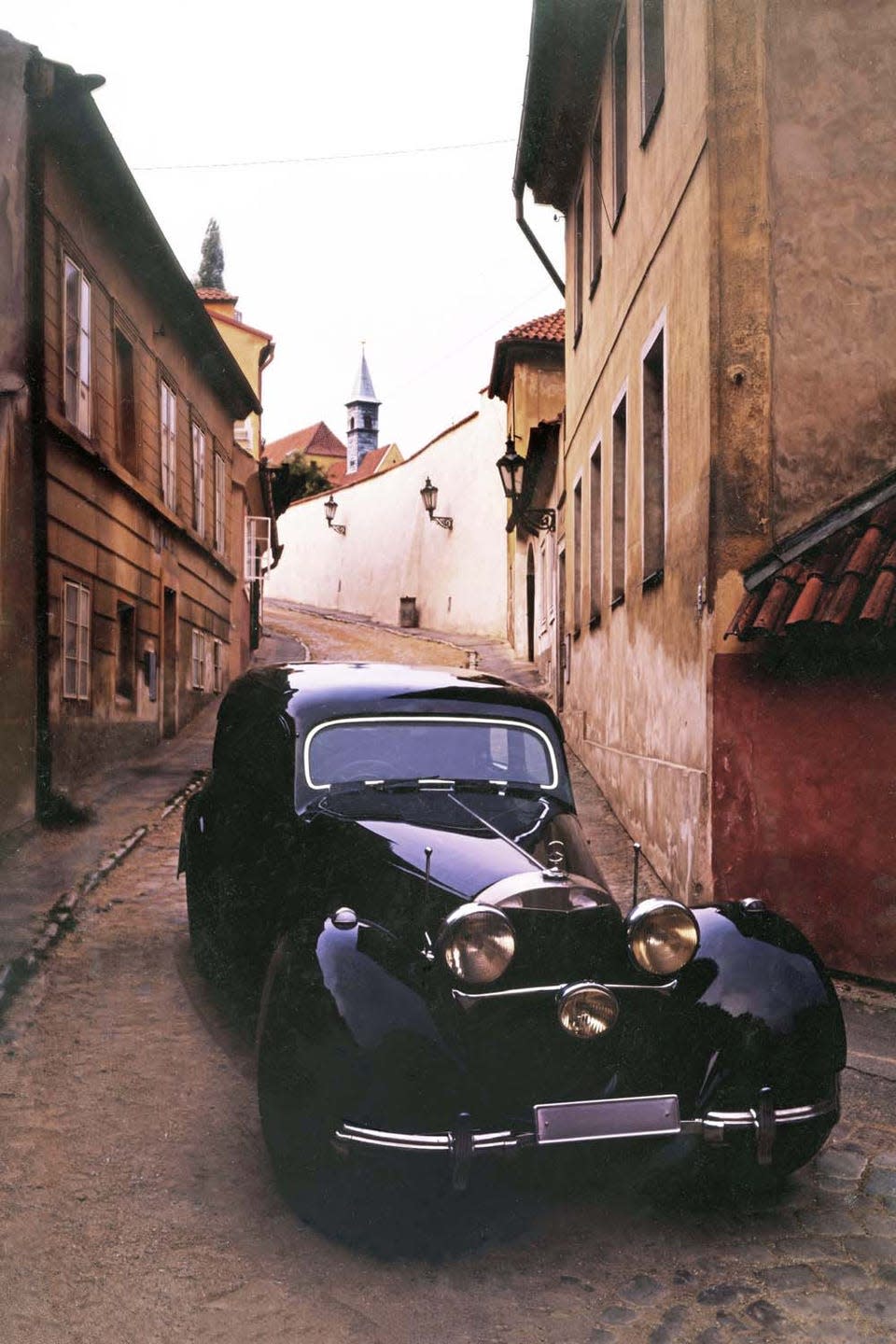
The finder in Latvia was Peter the Swede. Over the phone, he was asked to get the engine and chassis number of his find. The number he later gave was 408 377, which matched one of the Aktion Ps that had disappeared after the war. Now they wondered if Peter was simply reading back the AQ article to them. So Peter was asked questions that he could easily have answered from a reading of the article—the thickness of the window glass, for example, which he didn't know. Finally, Peter told Fritz, "You come over, and I'll show it to you."
He didn't have to ask twice. Four weeks after the first trip, the three Americans were back in Moscow.
Also back in the comedy zone. After a contact showed them an alleged "Stalin car"—this one a beat-up, bulletproof Y-12 Packard—Fritz asked the owner, through an interpreter they'd hired, "How much?"
"Two million dollars."
"No, forget it, it's not worth two million dollars," Fritz replied.
The interpreter said something to the Russian, who made a counteroffer. "Okay, then, $250,000," the interpreter said.
"A helluva negotiator," said Fritz.
They went west after the Aktion P car. The train trip to the Latvian town took 16 hours, no food aboard. They were met at the station by Peter the Swede and a Latvian named Milan, who had put Peter on the trail of the Aktion P.
They all got into a car and drove deep into the countryside, arriving finally at a series of stone barns and houses. But the car's owner, a mechanic, was not there. When Peter was asked which barn the car was in, he sheepishly conceded that, well, he hadn't actually seen it, but, not to worry, Milan had—12 or 13 years earlier. The Americans rolled their eyes.
The mechanic's wife pointed out the right barn. Loose boards covering its doorway were removed. And then the Americans, having traveled all this way, found themselves face to face with a seven-foot-high pile of junk, scrap, and refuse. It looked as if someone had stood outside and tossed in every piece of junk that came his way during his life.
"There's no car here," Reuter said glumly. Peter scampered over the junk pile and disappeared deep inside the barn. Finally, Fritz yelled at him. "Peter, is there a car in there?" Peter's hushed voice can be heard on the videotape: "Yeah. [Pause.] The body of a car."
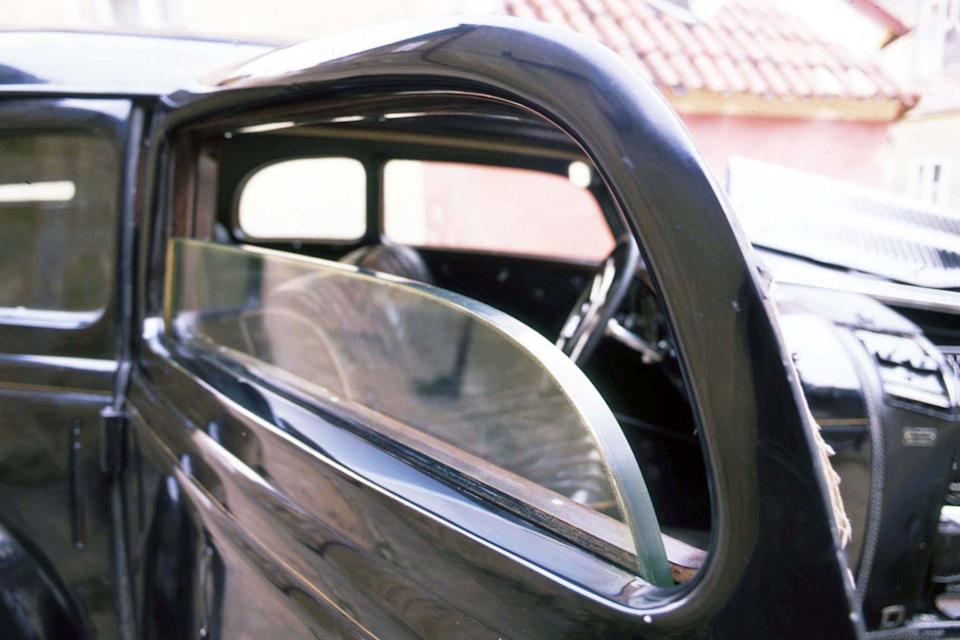
Fritz says, "We climbed over, and there, beneath the rubble, we could see the top left portion of a roof and a left fender. We could see it was the right type of body, and it was aluminum. And we knew we were on to something. The body was there, but in horrible condition. We looked inside, and the armor plating was there, and we knew this was an Aktion P."
No one asked where the engine was, or inquired about the missing seats or the wheels. They wanted to know just one thing: What was the engine and chassis number, and would it match a number on Daimler-Benz's official Aktion P list?
The frame was close by, buried under junk. Peter crawled down. The videotape shows him locating the stamped factory plate and rubbing it to reveal the numbers. Then you hear him reading it out: "Five forty K. Four oh eight three seven seven."
Bingo. That Aktion P car was built in 1939 and assigned to the Third Reich's chancellery. Eva Braun may have taken a last ride in it. The diary of Martin Bormann, Hitler's secretary, says Braun took a "courier car" from the chancellery to Hitler's Berlin bunker on March 7, 1945, shortly before her suicide.
Fritz says, "We looked inside, and the armor plating was there and on the floor nearby. I looked at Rich, and our eyes said, 'Wow!' We tried to appear casual. What we wanted to do was shout. Finding it in that barn in all that junk was just incredible!"
Everyone piled excitedly into Milan's car and drove off to find the 540K's owner, whom we'll call Z. He lived an hour away in a duplex-sized building that was also home to three other families. "We find him out in back, working on a VW, and we send Milan to talk to him. We're told this guy does nine different jobs just to get by, so we're expecting Milan to come back and say something like, 'Yeah, he says he'll take 3800 bucks for the car.' But Milan comes back and says, 'He doesn't want to sell it.' What!? And Milan says, 'Not for any price.'
"So he knows it's worth something, but we know it's worth more than what he thinks. So we drive back to where we're staying to try to figure out how we're going to get him to sell it," says Fritz.
They wondered if Z, a tall, pensive, bearded man in his forties, knew more about the car's value than he let on. Paranoia being what it is in his neck of the world, Z later told them he feared losing the car—to the KGB, to the "Russian mafia." That's why he rented the barn space, disassembled the car years ago, and spread out its many pieces in four barns, a puzzle that only he could put back together.
The job of wooing Z fell to Brewster, the wealthy, refined American who, more than the others, wanted the recognition that would come with this international discovery, this collector's coup. And why not? As the money man, he would pay.
So Fritz and Reuter went off in search of cars in St. Petersburg and Moscow, while Brewster, accompanied by a young interpreter named Mark, spent the evenings with Z and his family. But Z would not sell. A week later, the Americans flew home.
"Once in your life," says Fritz, "out of a thousand or a million cars, do you find a car in a barn that is this unique. We were not going to let this car go."
The phone calls to Latvia were regular, but Z didn't budge. He wouldn't sell.
"In the meantime," Fritz says, "Peter told us we could sell some American cars over there. So we sent over a Dodge Caravan and a Jeep and an '85 Mercedes 230 wagon that I couldn't make legal in America. We kept calling Peter and asking, 'Will he sell the P car?' and the answer was always no."

In mid-September, Peter sensed that Z was weakening. Toward the end of the month, the Americans returned. Fritz laughs now at an idea they thought might win over Z. "He has a daughter. We didn't see her, but somehow we thought she was 9. So, we'll get her some Barbie dolls, some nice toys—and a trip to Disney World for the family! And that first day, the daughter comes home, and she's not 9, she's 16. So there goes that idea. We work on the guy for a couple of days, and he says no again."
Rich Reuter says: "It wasn't working. So we went to St. Petersburg to see some cars, and we left Brewster with Z. If any of us could pull it off, it was Brewster—he's relentless, He won't give up, but he's also quiet and polite, and they got along."
Fritz, Reuter, and their band of car hunters then got entangled with a volatile Russian who agreed to sell them a prewar Mercedes 170 Cabriolet A and three German Army Sahara R75 motorcycles. The Russian accepted $52,000 in cash, then reneged, disappearing briefly on delivery day. All this happened not too far from a place, Reuter recalls, where local thugs make sure everyone can see at least a portion of their shoulder-holstered handguns. Fritz went to the local cops, where the only reaction seemed to be their shock that anyone would be foolish enough to enter into a deal with this well-known gangster. Fritz finally confronted the welcher at his home and somehow got back Brewster's cash, but a good payday had been lost.
Returning to Latvia, they learned Brewster had been unsuccessful. They all felt that Z had to be offered not just money, but something extraordinary. Then it struck them. "We were told the daughter was an excellent student," Fritz says. But what future would she have in this emerging country? "What if we offered his daughter an education in America? And along with that, and some cash, we'd also throw in the Mercedes wagon." It was a Tuesday, and Brewster would spend the next three nights massaging Z, leading up to that offer.
The Americans planned to fly to Finland, then home, on Friday. When Fritz went to bed Thursday night, he expected to leave empty-handed. He was awakened in the dark at 5:45 a.m. by an excited Brewster. "Wake up, wake up! We got the car! We give 'em an education for the daughter, the Mercedes wagon, and a lot of money." He was laughing. "Now, get up. You gotta figure out how to get the car out of here!"
The obstacles seemed huge. The duty on this car would be determined by a local "expert"—in this case, the head of the local car club. But that man had made a small offer to Z for the car. Fritz says, "He'd know it was ours, and he'd say, 'Yeah, that's a $20-million car.' So we couldn't go the normal route.
But we needed that customs stamp because we had to get it out properly. Z had proper ownership, and we had to go out of the country properly and enter the U.S. properly."
Next, they called a man named Laszlo, whom they'd met in a rundown hotel—the only one near the local airport. Laszlo was the airport's air-traffic controller. Fritz asked him if he could hire a couple of planes. No problem, said Laszlo, except one—they couldn't be flown out of the country. He suggested that Fritz rent them in Helsinki and fly them back. "And," Laszlo said, "any time you want the airport open, I'll open it for you. I can get you a customs man who'll stamp anything"—for a small fee.
Mark, the interpreter, called Finland and arranged for two planes. "The problem," Fritz says, "is they weren't very big planes, but we got the cargo-bay measurements and figured we could get the car in if we cut off the roof."
They now believed that everybody and his dog in this suspicious little country knew about the car and the "rich Americans" poking around. It was not implausible that the Russian mafia would intercept them, taking the car at gunpoint or extorting a huge payment, or worse. (Reuter says of their entire time in Russia and the Baltics: "I wouldn't say we were nervous—I would say we were very nervous.") So the plan was to quietly collect all the Aktion P pieces over the weekend, and at precisely 2:30 Monday afternoon—an election that day would divert attention—bring in a rented flatbed truck, load it up, set off in convoy at dusk for the tiny airport three hours away, then fly off under cover of darkness.
Suspicious of the phone lines, they bought a $2300 mobile phone. "There was a guy in the motel we thought was mafia," Fritz said, "and we didn't want to use their lines." Meanwhile, Brewster took the phone and a new fax machine and went to a campsite in the woods that had electrical outlets, and then called the headmaster of his former prep school, seeking to enroll Z's daughter almost immediately. Brewster faxed the girl's school records. The school had accepted a lot of Brewster money, and it responded by finding her a place in a more appropriate New England prep school specializing in foreign students—children of ambassadors, foreign entrepreneurs—and she would soon be off to America.
On Saturday, Fritz and Reuter, using tin snips, gingerly cut off the car's roof along an existing seam. The engine block was dragged out by hand. The interior, which was stored at Z's mother's house, was brought to the barn. Hundreds of parts and body panels and armor plates were boxed up.
Laszlo, the air-traffic controller, was informed of their getaway time. He would open up the airport, no problem. And, Fritz asked, could he have a customs agent on hand? No problem, said Laszlo cheerfully. This part of the plan worried Fritz the most. If there was trouble, it would come at the airport. Who was mafia? Who was not?
On Sunday, Fritz took a hydrofoil across the Baltic Sea to Helsinki and "paid many thousands of dollars" for the plane rentals. "I told them they had to be there by 10 p.m.—no later—and I said I wanted three seats on one of them because we're flying out with the car." He did not sleep well or long that night.
In the meantime, Milan let it slip to the local car club that the Americans were close to buying the car. Peter found out and warned Fritz. It was almost guaranteed that the mafia would get wind of it. The anxiety level went up another notch. No one, including Z, was sleeping well.
Fritz returned from Finland on a commercial flight Monday morning. "We had nothing to do until 2:30, so we split up and drifted around town—in case anyone was watching us, they'd see nothing was up, and we were to meet back at 2 o'clock."
The flatbed appeared on time at the barns. But with them came two beat-up clunkers—a Fiat and some kind of panel van—as transport, and the Americans had one more thing to worry about. They carefully carried the body of the Aktion P into daylight and secured it on the truck. As planned, at 6:30 that evening, they drove off in convoy—Z in the flatbed, Peter and Rich in the Fiat, and Mark, Brewster, and Fritz in the van.
They drove on back roads. At an intersection, Mark's old van quit and wouldn't start. "We jump out, and it's the cable connection to the battery. We prop it up, it starts, we get back in, and it stalls at the next stop. We're very tense, and Mark—he's educated and well spoken, but he talks and talks in a roundabout way. Like he'd say, 'It is said that, uh, in this area, uh, some 341 years ago—it may have been 345 years ago—that there was, uh, a particular carriage that was, uh, supposedly painted, uh, a bright, uh, yellow!'
"We'd say, 'Mark, shut up! Is the mafia gonna get us or what?'"
After two hours on the road, the light began to fade, and fog moved in. "Now we're worried the plane can't land," says Fritz. "We're not talking anymore. Then Mark says, really slowly, 'Well, it seems to my mind, there may be, uh, some floating sensation in the vehicle that I, uh, am able to detect in the steering wheel.'
"Mark, whaddaya mean?" Fritz snapped.
"Well, I think there may be, uh, some difficulty with the inflation pressure of, uh, one of the tires—"
"Mark, do you have a flat tire?"
"Yes. What should I do?"
"Pull over! Pull over!''
In the dark, five nervous men gathered around the van with the flat.
"Mark, where's the jack?"
"Well, you see, this had been, uh, a used vehicle, uh, when I purchased—"
"There's no jack?" The spare was buried under all the boxes, so they had to be removed. The jack from the flatbed did not fit. Finally, using a board, it was forced into place. Then they discovered there was no lug wrench.
"We got the lug wrench out of this Russian copy of a Fiat, and the van is I-don't-know-what, and I said, 'I'm going to make this fit. It's got to fit.' And it did!"
Back on the road, they were now running late. The fog became thicker. "And it got really quiet in that van. And Mark says, 'Well, it was quite fortunate that Rich, uh, mentioned to me to make certain that I, uh, check the, uh, air in the extra tire and wheel, which I had here, uh, in this vehicle—"
"Uh-huh, and... "
"—yes, it was, because in fact when I checked it, uh, this morning, it was completely empty, it had no air—"
"You mean the spare has a leak in it?"
"Yes, probably that's true, yes."
"Oh, wonderful."
"So, what do you, uh, suggest I do?"
"Drive faster!"
Shortly after 10 p.m., the silent, darkened airport appeared through the windshield. "As we approach the gated entrance, this Russian guy comes out waving and yelling. Mark and he talk back and forth, and I say, 'Mark, what's going on?'
"Well, you see, it seems the customs official is, uh, not available."
"He's not available!?"
"Well, it seems, uh, that he lives quite close to here, but it's not really, uh, within distance for him to walk—"
"Mark, what're you saying?"
"Well, he's a young customs official, and as yet he does not have his own car and—"
"Mark, goddammit, you mean he needs a ride?" Someone drove off to fetch him.
But now the Russian told them to drive around to a rear entrance to the airport. The rear? It was very dark, and the fear was now palpable. The convoy moved along the perimeter of the fence. Just as it arrived at an opening in the fence—whooomph!—a huge searchlight beamed onto the convoy.
"Ohmigod!—"
But it was only Laszlo, the air-traffic controller, lighting their way. Fritz says: "Then I see the two Finnish planes. The pilots are there, and they speak English. One of them says, 'You're late—we've got a problem. We have clearance for Russian airspace but only until 11:30.' So we had an hour and 10 minutes to load all this stuff and distribute the weight equally between the two planes. I asked the pilot how we'd know if the weight was right, and he said, 'Well, if I take off and you're in the plane behind me and I crash, you know your plane will make it.' And then, out of the dark, 12 guys appear. Laszlo had found help to load the planes.
"I went in to see the customs guy. I sat in the little office, nervous, and he says, 'Here are the papers. It states you are shipping out this and that,' and then he stamps it. That's it, it's over. I give him $100. And he says, 'Would it be possible that if I ever come to America, you could extend an invitation [a visa requirement]?' And I just exhale, hard. 'Sure,' I say. And I give him all the local cash I have, maybe 28 bucks. So now we have the legal papers to export the car. And he says, 'Nobody ever checks these documents—they just throw them in a file.'"
By 11:15, the planes were loaded. Fritz distributed a lot of American cash to Peter, who would pay Mark and Milan. The Americans piled into the cargo bay of one plane. Brewster videotaped the takeoff. The tape shows Fritz opening a beer provided by the Finns, taking a deep swallow, then looking at the camera and saying, "This tastes really good." The plane lifted off, and three hours later they were in Helsinki. The next day, they paid $7000 to Finnish Air to ship them and the car by 747 to Kennedy airport in New York.
Epilogue
The events in this story took place in the summer and fall of 1992. In June 1995, Z's daughter graduated from the American prep school. She won an award for ability with English—best in her class—and has returned to her homeland where she attends a university. Her future seems bright indeed. With medical care, dentists, and dermatologists, and trips home at Christmas, her education cost Brewster more than $100,000. The Americans won't say, but it's a good guess Brewster spent more than $400,000 in all for the car.
Z now owns the duplex he shared with three other families.
Fritz, Reuter, and Brewster are still hoping for a happy ending. They were so certain that a bidding frenzy would greet this rare car on its arrival in America that for six months, they put up a wall of silence. Then they put out the word.
"It was weird," says Reuter. "It was greeted with silence." Reuter laughs when he recalls, "I was thinking how I was going to spend my share, and here was this big silence."
"We figured it was worth about $14 million," says Fritz, based on the Mercedes curator's guesstimate of $20 million.
After four years, genuine interest has been expressed by just two collectors. Mercedes-Benz has all but testified to its authenticity, but the company is not interested in buying a symbol of Hitler's reign. Worse, as the collector-car market turned ever flatter, Reuter's restoration business collapsed.
The car sits alone in an empty warehouse. Reuter figures the restoration will cost $200,000. The roof has been reattached seamlessly, and the aluminum body has been carefully sanded. When the faint light in the warehouse is just right, the car gleams eerily.
If you're in the market, the Americans will take $1.5 million. Fritz smiles. "It will sell. It will."
"Listen," says Reuter, "there was a moment—the moment we flew out—that made the whole thing worth it to me. It was just an incredible adventure."
One afternoon recently, I watched some new videotapes with Fritz and Reuter. This time, they are shown traipsing over some remote, uninhabited tundra in the Kuril Island north of Japan, accessible only by a frightening helicopter ride through fog that blankets the islands. They're hunting for downed World War II warplanes, very valuable. In the videotapes, they are always smiling, always having a good time.
Postscript
The article above was published in 1996. In 2014, the Aktion P car finally went to auction at the Bonhams Goodwood Festival of Speed sale. The car brought 449,500 pounds (approximately $750,000).
Link to Bonhams Auction listing from 2014
You Might Also Like
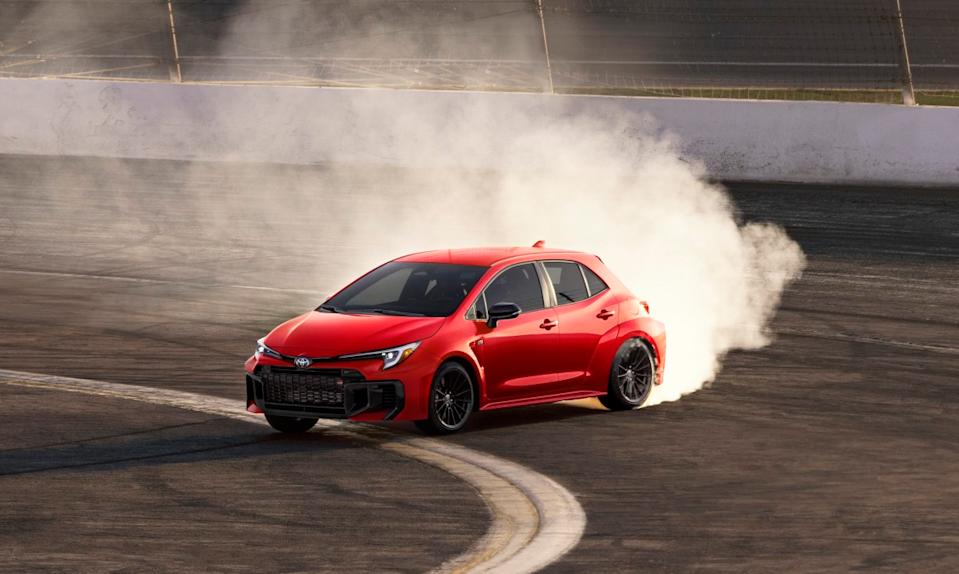

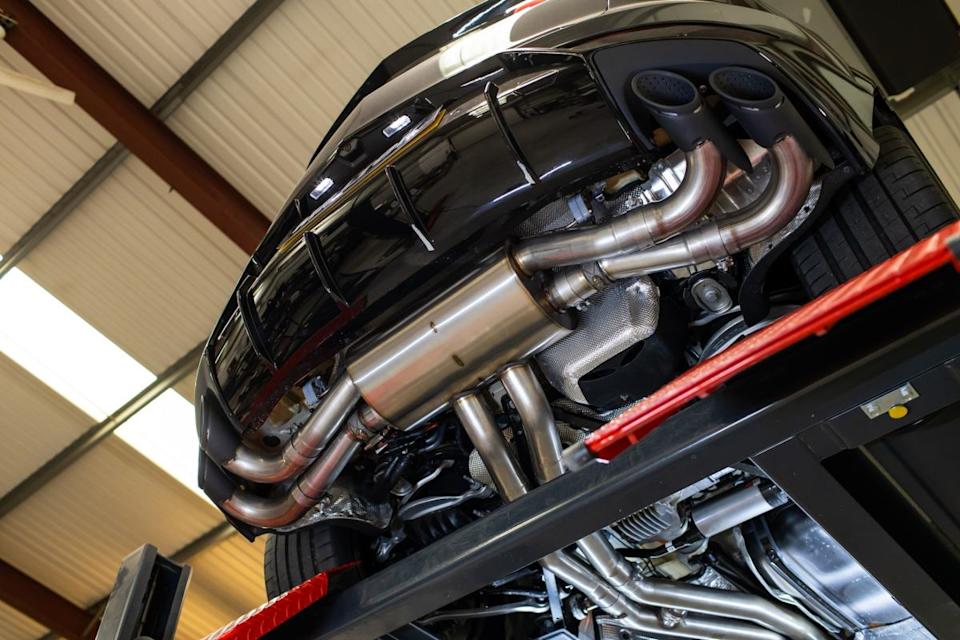

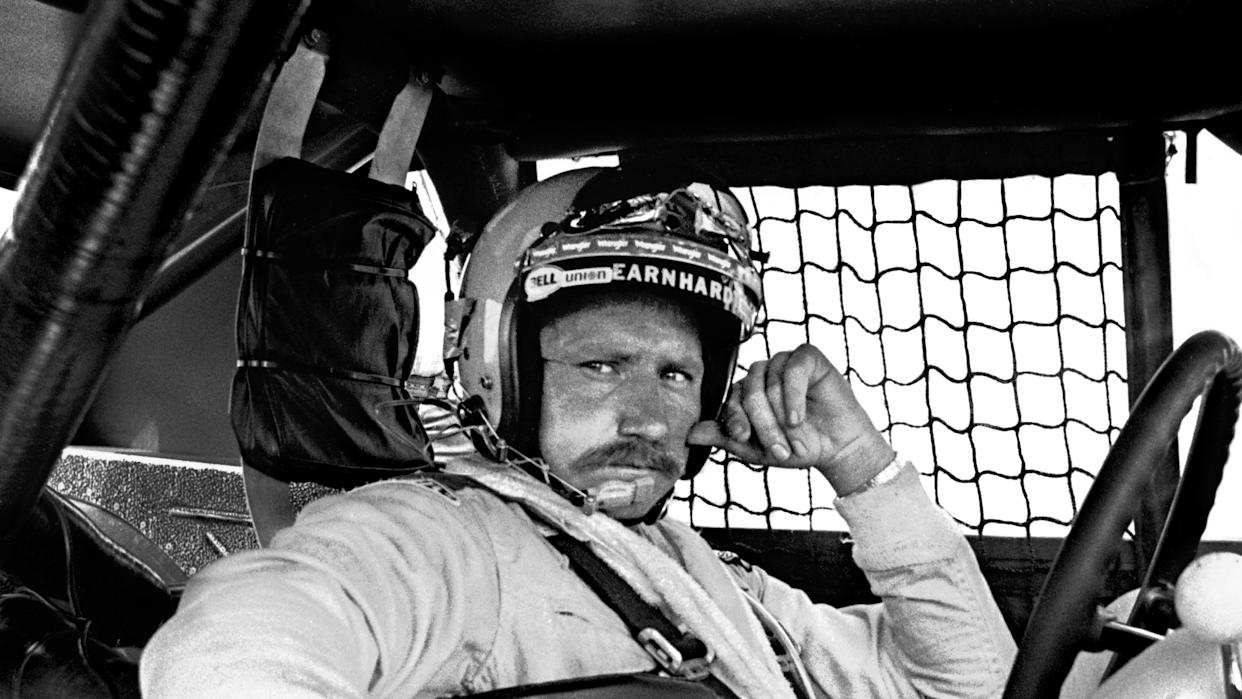

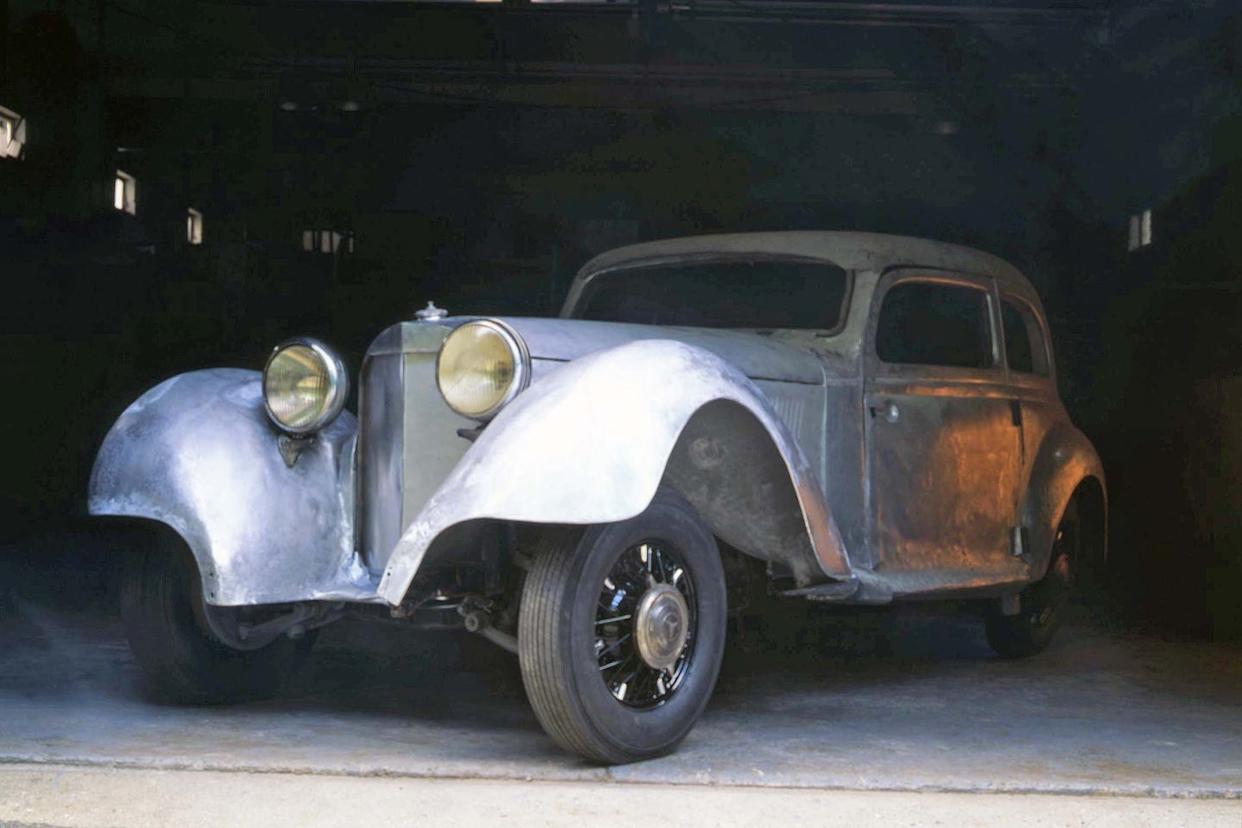
Comments